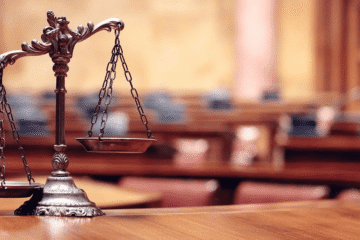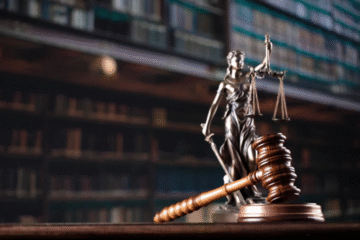
This Article is written by Piyush Kumar Das of Delhi Metropolitan Education, an intern under Legal Vidhiya
ABSTRACT
Advocates have long been central figures in the fight for justice, particularly when it comes to defending the rights of the marginalised. These communities, including Dalits, Adivasis, women, LGBTQ+ individuals, and economically disadvantaged groups, often face systemic discrimination that limits their access to legal remedies. This article explores the multifaceted role of advocates in promoting social justice, advancing human rights, and bridging the gap between the marginalized and the law. Through an examination of public interest litigation (PIL), legal aid services, and activism, this article highlights how advocates play a pivotal role in challenging societal inequalities. The legal framework, challenges faced by advocates, and landmark judicial interventions are discussed, providing a comprehensive understanding of how lawyers have fought for justice and equality.
KEYWORDS
Advocates, Marginalised Communities, Legal Aid, Social Justice, Public Interest Litigation, Human Rights, Access to Justice, Constitutional Remedies
INTRODUCTION
The Indian Constitution enshrines the vision of justice—social, economic, and political—as the cornerstone of the nation’s democratic governance. However, despite these constitutional promises, millions of Indians, particularly from marginalised communities, continue to suffer from systemic inequality, discrimination, and exclusion. These communities include Dalits, Adivasis, persons with disabilities, religious minorities, and women, who often find themselves devoid of basic legal protections and access to justice. In such a context, advocates or lawyers assume a central role, acting not only as legal representatives but also as activists and champions for human rights. They are often the first line of defense against the exploitation of the vulnerable, the voice for the voiceless, and the key to unlocking the power of the law for those who need it the most.
This article examines the pivotal role that advocates play in advocating for the rights of the marginalised in India. From litigation and legal aid to public interest advocacy, lawyers have been instrumental in challenging discriminatory practices and securing constitutional protections for underrepresented groups. Through this examination, the article underscores the necessity of the legal profession in ensuring that the promises of the Indian Constitution—equality, non-discrimination, and justice for all—become a lived reality for every citizen.
THE HISTORICAL ROLE OF ADVOCATES IN SOCIAL REFORM
The connection between legal advocacy and social reform in India has a long history, and its roots can be traced back to the pre-independence era. Many of the leaders who fought for India’s independence were trained as advocates, and they utilized their legal expertise to challenge the oppressive colonial regime. Figures such as Mahatma Gandhi, B.R. Ambedkar, and Jawaharlal Nehru were not just political leaders but also skilled lawyers who understood the transformative potential of law in shaping society. Gandhi, for example, used his legal training to challenge colonial laws that discriminated against Indians, while Ambedkar drafted India’s Constitution, ensuring that it provided legal protection against caste-based discrimination and inequality.
In post-independence India, the role of advocates in securing social justice continued to evolve. The Public Interest Litigation (PIL) mechanism, which emerged in the 1970s and 1980s, marked a turning point. PIL allowed advocates to file petitions in court on behalf of the marginalised, even if those individuals did not have the financial means to access the legal system. This innovative judicial tool enabled advocates to bring societal issues, such as poverty, inequality, and environmental degradation, before the judiciary. Through PIL, the law became a vehicle for social transformation.
LEGAL AID AND THE FIGHT FOR ACCESS TO JUSTICE
A key aspect of the work that advocates do in defending the rights of marginalised communities is their provision of legal aid and access to justice. Despite the existence of a robust legal system, access to justice remains an elusive goal for many in India. A large portion of the population, especially in rural and economically disadvantaged areas, lacks the means to hire a lawyer and navigate the complexities of the legal system. To address this gap, legal aid systems have been established through the Legal Services Authorities Act of 1987. The Act aims to provide free legal services to those who cannot afford them, ensuring that economic status does not determine one’s ability to seek justice.
Advocates who volunteer or are appointed to provide legal aid perform a critical service by representing clients in a variety of legal matters, ranging from issues related to land rights and domestic violence to caste-based discrimination and child rights violations. District Legal Services Authorities (DLSAs) and State Legal Services Authorities (SLSAs) are responsible for coordinating these efforts and ensuring that advocates are available to represent those in need.
The right to free legal aid has been recognised by the Indian judiciary as an integral part of the right to life and personal liberty under Article 21 of the Constitution. The Supreme Court, in its landmark judgment in M.H. Hoskot v. State of Maharashtra (1978), held that the right to legal aid is a fundamental right. Yet, challenges remain in fully implementing this system. Legal aid schemes often face issues such as inadequate funding, poor infrastructure, and a shortage of qualified advocates. As such, advocates engaged in legal aid work must often do so under challenging conditions.
PUBLIC INTEREST LITIGATION (PIL) AND ADVOCATES’ ROLE IN SOCIAL JUSTICE
One of the most significant contributions of advocates to the cause of marginalised communities has been through Public Interest Litigation (PIL). PIL allows advocates to approach the courts on behalf of individuals or groups who are unable to represent themselves, thus ensuring that issues affecting the public, especially the marginalised, are brought before the judiciary. This mechanism has played a transformative role in addressing social issues such as poverty, environmental degradation, human rights violations, and caste-based discrimination.
PIL has led to numerous landmark judicial decisions, many of which have had a profound impact on the lives of marginalised groups. For instance:
The cases of Hussainara Khatoon v. State of Bihar (1979), Bandhua Mukti Morcha v. Union of India (1984), and Nandini Sundar v. State of Chhattisgarh (2011) highlight the crucial role of public interest litigation and legal advocacy in addressing systemic injustices faced by marginalised communities in India. In Hussainara Khatoon, brought by the People’s Union for Civil Liberties (PUCL), the Supreme Court intervened to release thousands of undertrial prisoners who had been languishing in jails for years without trial, drawing national attention to the plight of undertrials and prompting significant reforms in the criminal justice system. In Bandhua Mukti Morcha, the Court recognised bonded labour as a form of slavery and directed the government to take action for the release of bonded labourers, primarily from Dalit and Adivasi communities. Finally, in Nandini Sundar, advocates successfully challenged the state’s policy of arming civilians to combat alleged Maoist insurgents, with the Supreme Court ruling against the state’s actions and underscoring the importance of protecting the rights of tribal communities from state overreach. Together, these landmark cases demonstrate how legal interventions have been instrumental in safeguarding the rights of India’s most vulnerable populations.Through PIL, advocates have provided a platform for the voiceless to challenge discriminatory practices and demand justice. Their role extends beyond mere legal representation to becoming active participants in the movement for social justice.
ADVOCACY BEYOND COURTROOMS LEGAL EMPOWERMENT AND GRASSROOTS ACTIVISM
Advocates also engage in advocacy beyond the courtroom, working with non-governmental organisations (NGOs), grassroots movements, and community organisations to raise awareness, offer legal education, and promote legal reforms. These efforts are crucial in empowering marginalised individuals by providing them with the tools to understand and assert their rights. For example, many lawyers work with women’s rights organisations to challenge gender-based violence or with Dalit organisations to address caste-based discrimination.
In addition to offering legal education, advocates are instrumental in drafting policy proposals, engaging in legislative advocacy, and lobbying for reforms that promote social justice. The National Legal Services Authority (NALSA), for example, has been involved in a wide range of activities aimed at improving access to justice, including the creation of legal awareness programs, community-based legal services, and Lok Adalats (people’s courts) that provide an alternative dispute resolution mechanism.
Moreover, advocates often work to amend laws that are discriminatory or inadequate in protecting the rights of the marginalised. For instance, the efforts to decriminalise same-sex relations under Section 377 of the Indian Penal Code were led by activists and advocates who used both litigation and public campaigning to challenge an outdated law.
CHALLENGES FACED BY ADVOCATES
Despite their crucial role, advocates who represent marginalised communities often face significant challenges. These include:
Advocates working on public interest and human rights cases often face numerous challenges that hinder their ability to effectively pursue justice. One significant obstacle is the threat of intimidation and harassment from powerful interest groups or state actors who are resistant to change and accountability. Additionally, the limited remuneration associated with pro bono work or legal aid cases makes it financially unsustainable for many advocates to continue such practice in the long term. Political pressures further complicate the landscape, as they can undermine the independence and impartiality of the legal profession. Moreover, the mental and emotional toll of handling cases involving grave human rights violations and systemic injustice can be deeply taxing, affecting the overall well-being of legal professionals dedicated to these causes.Moreover, there is a concern that the legal profession remains predominantly urban, upper-caste, and male. This lack of diversity within the legal community may limit the ability of advocates to fully understand and address the unique challenges faced by marginalised groups. This calls for greater efforts to diversify the bar, ensure more inclusive representation, and better connect advocates with grassroots struggles.
CONCLUSION
Advocates play an indispensable role in defending the rights of marginalised communities in India. Through legal aid, PIL, advocacy, and public interest lawyering, they act as the frontline defenders of justice, ensuring that the most vulnerable have access to legal remedies. Their efforts in securing landmark judicial victories, driving social reform, and empowering communities have transformed Indian society, making the legal system a tool for promoting equality and human rights.
However, despite their contributions, the legal profession must continue to evolve, ensuring greater inclusivity, support for pro bono work, and greater institutional recognition for those working in the public interest. The future of social justice in India depends on the continued commitment of advocates to uphold the ideals of the Constitution and ensure that justice is not just a privilege for the few but a right for all.
REFERENCES
1. Jaffrelot, C. (2005). Dr. Ambedkar and Untouchability: Fighting the Indian Caste System. Permanent Black.
2. Sathe, S.P. (2002). Judicial Activism in India: Transgressing Borders and Enforcing Limits. Oxford University Press.
3. Legal Services Authorities Act, 1987, Government of India.
4. Bhagwati, P.N. (1984). “Judicial Activism and Public Interest Litigation,” Columbia Journal of Transnational Law, 23(3), 561–577.
5. Hussainara Khatoon v. State of Bihar, AIR 1979 SC 1360.
6. Bandhua Mukti Morcha v. Union of India, AIR 1984 SC 802.
7. Nandini Sundar v. State of Chhattisgarh, (2011) 7 SCC 547.
8. National Legal Services Authority v. Union of India, (2014) 5 SCC 438.
9. Galanter, M. (1984). “Competing Equalities: Law and the Backward Classes in India”, University of California Press.
Disclaimer: The materials provided herein are intended solely for informational purposes. Accessing or using the site or the materials does not establish an attorney-client relationship. The information presented on this site is not to be construed as legal or professional advice, and it should not be relied upon for such purposes or used as a substitute for advice from a licensed attorney in your state. Additionally, the viewpoint presented by the author is personal.




0 Comments